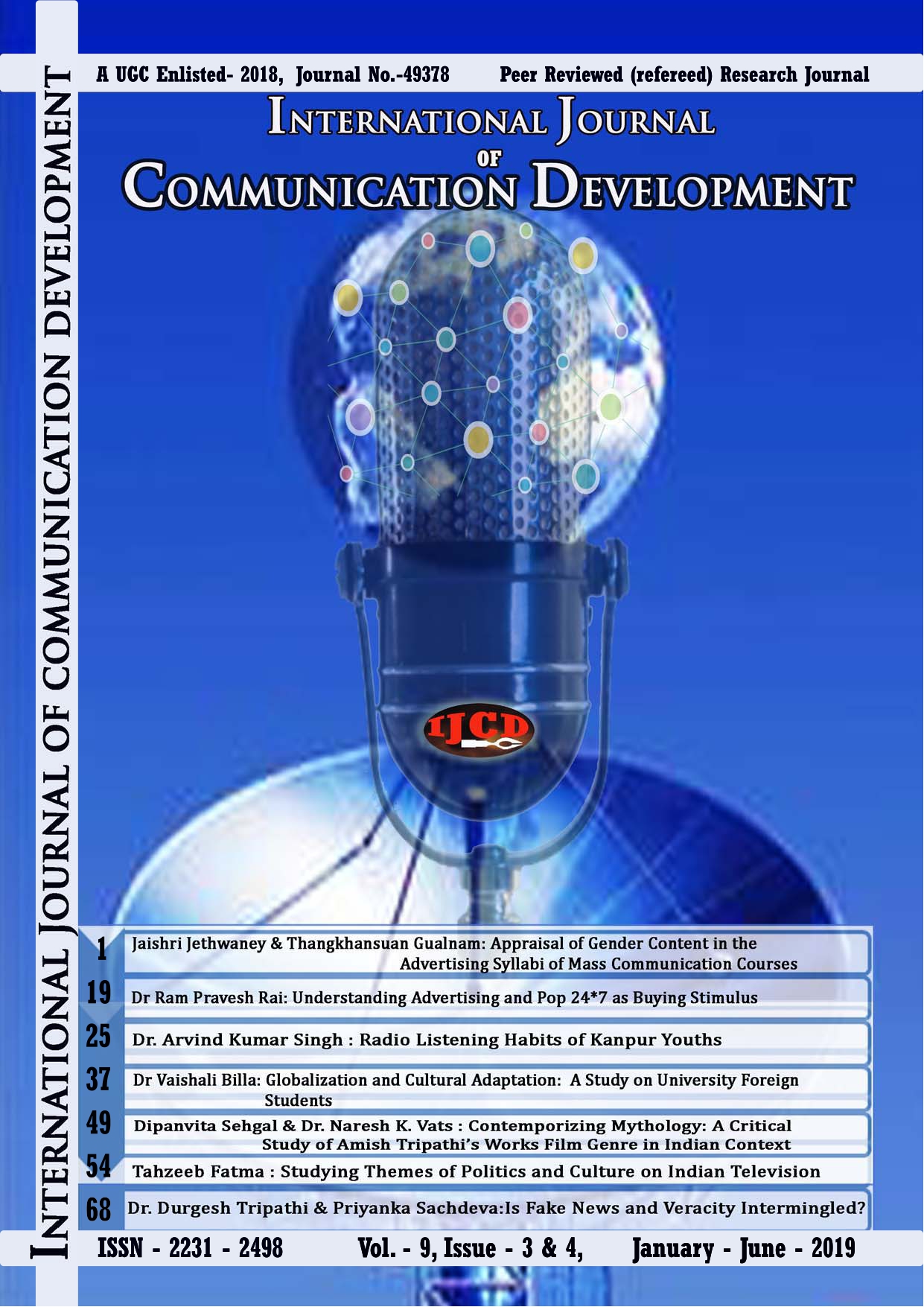CONTEMPORIZING MYTHOLOGYA Critical Study of Amish Tripathi’s Works
##plugins.themes.bootstrap3.article.main##
Abstract
Myths are a community’s legacies that are passed on over generations. They are open to interpretation, re-interpretation, re-creation, and review. This gives myths a transient quality and the narrators and writers of myths a license to revitalize them and change who the reader sees as hero, villain, reliable, un-reliable, good, bad, deity and human. Literary retellings of myths often focus on specific characters and tell their story from a perspective that may or may not have been told in a dominant narrative. The retelling of myth also contemporizes it in so far as it includes the contemporary socio-cultural sensibilities in it. The paper shall focus on how certain modern retellings of ancient Indian myths contemporize the context so that the reader is no longer reading the epic or a moral fable but rather an interesting novel that serves as a constant companion during lunch breaks or during metro rides. Amish Tripathi's Shiva Trilogy that focuses solely on the life and actions of Shiva as a human, his Ram Chandra Series with focus of one book on Ram’s tale, another only on Sita’s
perspective and the third that is due sometime this year from the point of view of Raavan are but a few examples of writings that make a shift from the normative narrative of epics. Devdutt Pattanaik's books on Indian myth, Anand Neelakantan's partisanship of the so-called villains from the epics, Kavita Kane's and Anuja Chandramouli's excavation of the minor women characters from myth and epic, Amruta Patil's subversive graphic texts that delve deep into the Mahabharata and the Puranas, Samhita Arni's The Missing Queen, which takes the end of the Ramayana further, show their readers how retelling of myth lays emphasis on contemporizing it and making it relatable in the present context. A major part of making recreations relatable is of relieving characters from the roles of Devas and Danavas. The paper proposes to focus on the fiction of Amish Tripathi and engage with the contextualization of characters according to the contemporary times for contemporary readers.



